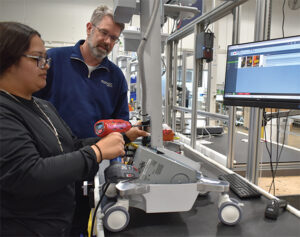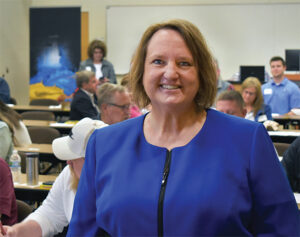Marty Seifert served for 14 years in the Minnesota House of Representatives, including three years as minority leader. He ran for governor in 2010 and 2014 and now works in government relations for St. Paul-based Flaherty & Hood, advocating on behalf of Enterprise Minnesota and small- and medium-sized manufacturers.
How has this year’s legislative session differed from the last one, when manufacturers got blindsided by sweeping changes to mandatory paid leave requirements?
Marty: This year there’s a tie in the Minnesota House, which has only happened one other time in history. We have a narrowly divided Senate — Democrats control it by one vote. You really can’t get any closer than that.
That’s in contrast to the last session, when the DFL had a trifecta — control of the House, the Senate, and the Governor’s mansion. They felt they had a mandate to march through a pretty aggressive agenda. The unions and a lot of their base wanted a paid leave program. Essentially, they told manufacturers and the business community that they were going to do this, and they didn’t really accommodate the concerns they heard. It passed with no Republican votes. There were a lot of alarm bells about how onerous this would be, how expensive it would be, and how confusing it would be, and it fell on deaf ears.
That session really showed the value of direct outreach to legislators regardless of their party. For manufacturers, that means giving them tours and explaining to them that their legislation makes a big difference in your lives and your business. It’s showing that the more regulations, rules, and taxes they pass, the more manufacturers have to deal with.
Did they make any modifications to the paid leave requirements during this year’s session?
Marty: This legislative session was mostly about budgeting. To get significant changes to the paid leave laws passed during the last session, Republicans would have had to tie those changes to the budget. That would have meant shutting down part of the government. That wasn’t going to happen. Paid leave is popular with most people, and many legislators didn’t understand the negatives.
The best way to explain those negatives is to have elected officials come to your business. You have to show them: here are my seven employees, and here’s what we do. This person is really key to my business, and if they go on paid leave for two months, our whole system fails. A lot of lawmakers don’t understand that unless they’re on site and see that person and see the role they play in the business.
They need to know that for some of our really small businesses, this could jeopardize the existence of their business. They will have to shut down, at least temporarily, if they lose one or two key employees to paid leave for a couple of months.
There was a critical provision to fund Enterprise Minnesota included in this year’s budget. What did that show about support for manufacturing among lawmakers?
Marty: We had bipartisan support in both the House and Senate for Made in Minnesota, which used to be called the Growth Acceleration Program, or GAP. Early in the session and through mid-April, we were in the budget for half a million dollars per year for the biennium. We had very good hearings in the House and the Senate, and it was approved by the Jobs Committee and the Finance Committee in the Senate. The House had an impasse over other issues, so it wasn’t finalized until after they adjourned on May 19. Ultimately, they kept that $1 million in funding for Enterprise Minnesota, showing that we really do enjoy strong bipartisan support.
Keeping that funding despite challenges to balance the budget was critical because of some potential challenges with federal government funding that helps support Enterprise Minnesota. It was also a sign that lawmakers understand the value of manufacturing across the state, and the importance of Enterprise Minnesota in helping companies grow.
What is the best way for manufacturers to be heard on these policy issues?
Marty: When the legislature adjourns, they have literally seven months when they can do a tour. So, we’re really encouraging our manufacturers to talk to their local legislators and get them out to see their operations. Large, medium, and small, it doesn’t matter what their size is, they’re all important. Direct outreach to legislators, regardless of their party, lets you make a personal connection with them. We have to tell our story to both House and Senate members, both parties, rural and metro.
It can have a huge influence when an elected official has toured your place. Making that personal connection will pay off when legislation that affects manufacturers is under consideration. They’ll have a better understanding that manufacturers, especially the smaller manufacturers, are equipped to produce widgets, but they’re not set up to handle complex and expensive mandates.
When I was in the Minnesota House, I toured manufacturers in my district, both big and small. Schwan’s was the biggest employer in my district, and I did multiple tours there. But I toured small manufacturers as well. They produced some really interesting things that I think people didn’t know were even made in Minnesota. I still remember one guy who made fishing lures — it was literally just him making fishing lures in his house. Tours have a huge influence — I still remember them today.
Return to the Summer 2025 issue of Enterprise Minnesota® magazine.


